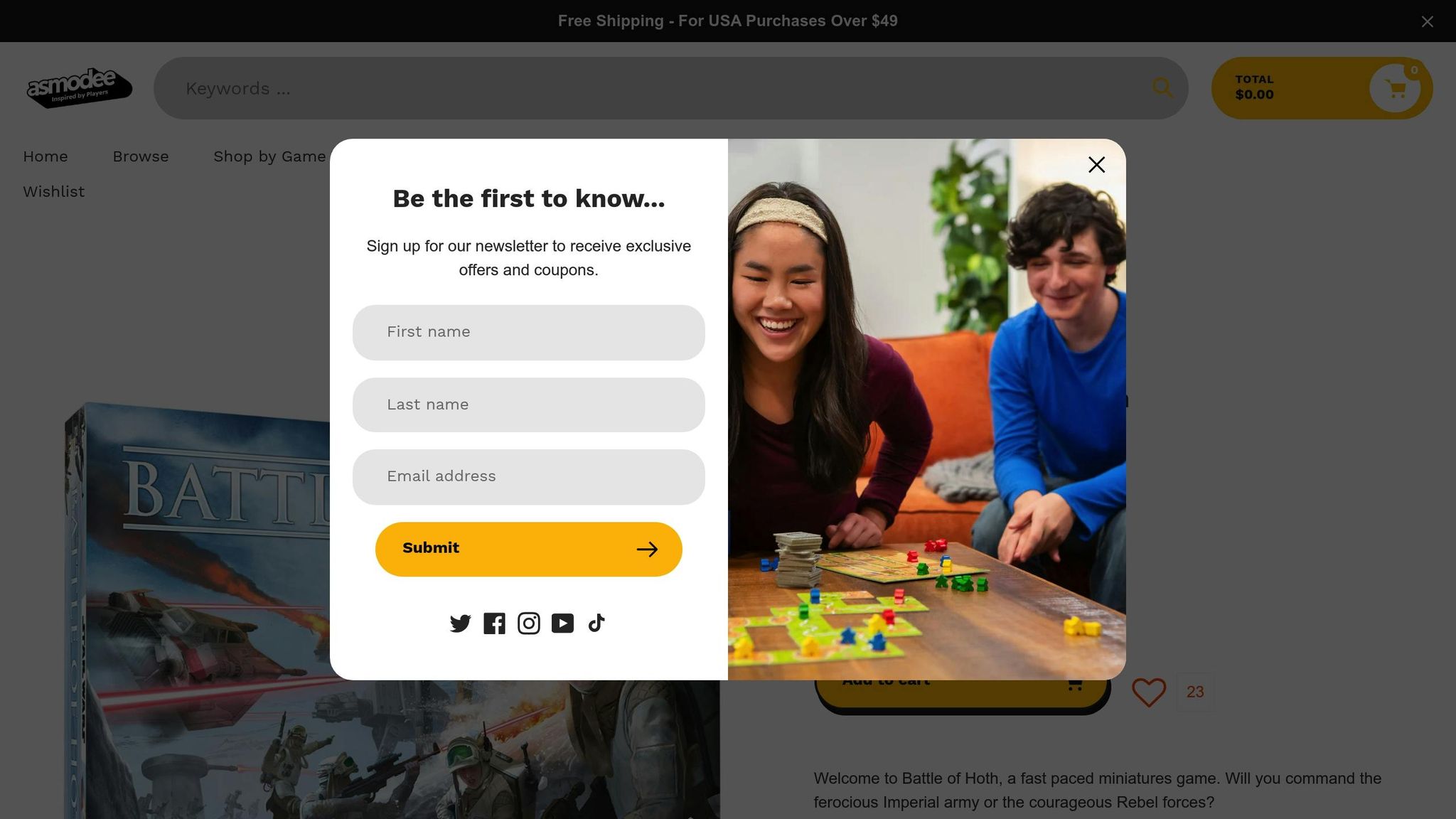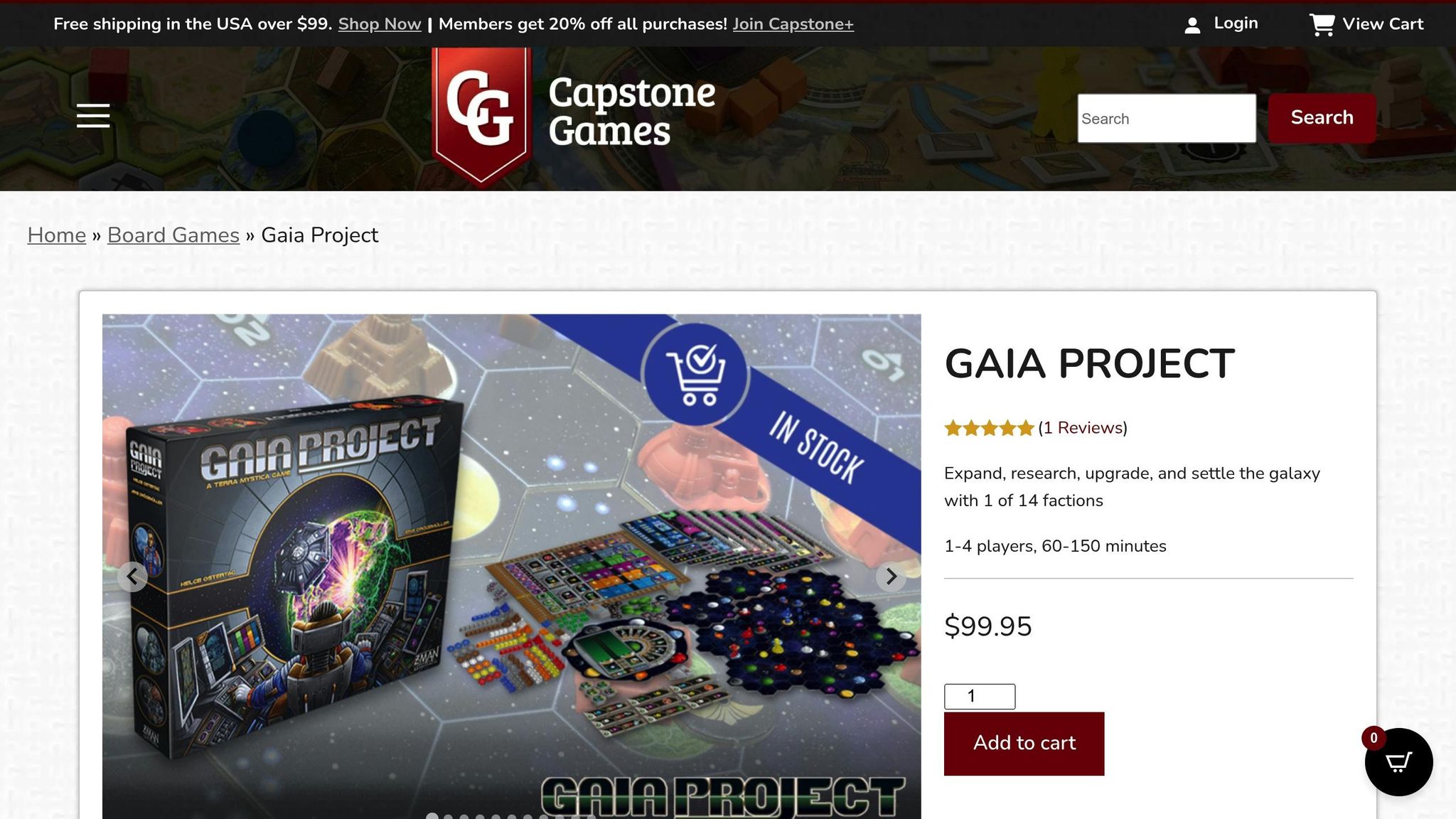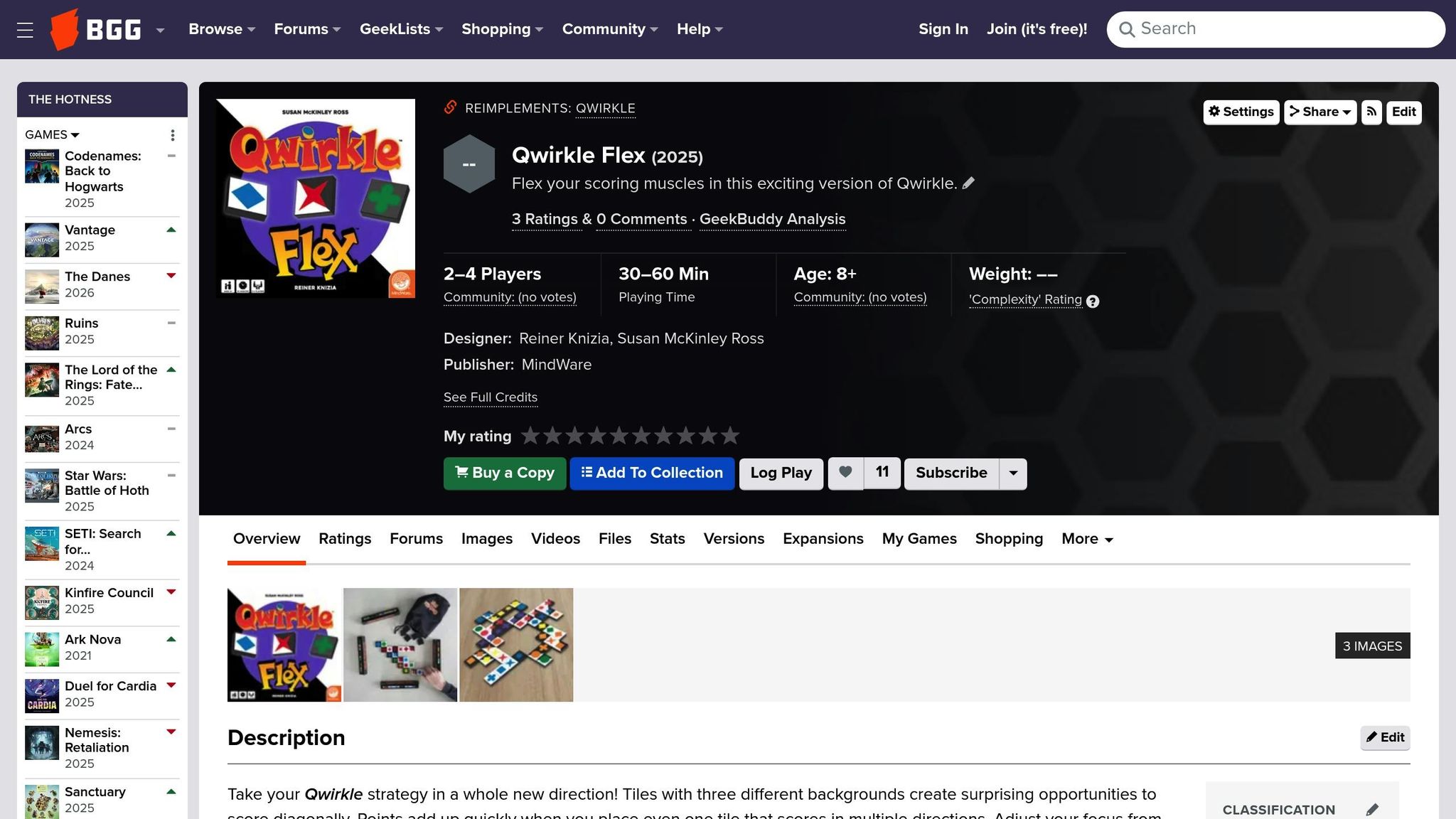Discover the Best Board Games for Every Player

Strategy Showdown: Outsmart Your Friends with These Titles
Looking to dominate your next game night? Here’s a quick guide to five board games that challenge your thinking and keep the fun alive. These games offer a mix of tactical combat, resource management, and clever tile placement, ensuring there’s something for every type of player. Whether you’re a beginner or a seasoned strategist, these games will test your skills and keep your brain sharp.
Top Picks:
- Star Wars: Battle of Hoth – Tactical battles in the Star Wars universe with area control mechanics.
- Gaia Project – A space-themed game focused on resource management and advanced planning.
- Castles of Burgundy – A dice-driven tile placement game with long-term planning at its core.
- Ascension Tactics: Inferno – Combines deck-building with tactical miniatures for dynamic gameplay.
- Qwirkle Flex – A light, pattern-matching game with diagonal scoring for casual fun.
Quick Comparison:
| Game | Players | Playtime | Complexity (1-5) | Core Mechanics | Best For |
|---|---|---|---|---|---|
| Star Wars: Battle of Hoth | 2–4 | 45–75 min | 2.5 | Area control, card-driven | Star Wars fans, tactical play |
| Gaia Project | 1–4 | 60–150 min | 4.3 | Resource management, planning | Advanced gamers, long sessions |
| Castles of Burgundy | 2–4 | 30–90 min | 3.0 | Dice rolling, tile placement | Strategy enthusiasts |
| Ascension Tactics: Inferno | 1–4 | 30–45 min | 2.8 | Deck-building, combat | Quick, competitive play |
| Qwirkle Flex | 2–4 | 30–45 min | 1.5 | Pattern matching | Families, casual gamers |
Each game offers unique mechanics and challenges, from controlling fleets in epic battles to mastering resource allocation in space. Whether you want something quick and light or complex and immersive, these titles ensure your game nights are anything but boring. Ready to play smarter? Let’s dive in.
Top 10 Strategy Board Games of 2024
1. Star Wars: Battle of Hoth

Step into the boots of Imperial commanders or Rebel heroes in this tactical recreation of one of the most memorable battles in Star Wars history. Star Wars: Battle of Hoth uses the acclaimed Command and Colors system, where each decision can swing the tide of war. Whether you're leading the Empire's unyielding assault or the Rebellion's desperate defense, this game offers a chance to outwit your opponents in a battle of wits and strategy.
Strategic Depth
The game revolves around a command card system, allowing players to activate units, maneuver forces, and engage in combat across various battlefield sectors. Leader cards add another layer of strategy, with iconic characters bringing unique abilities that can turn the tide of battle. The terrain system introduces additional complexity, applying offensive and defensive modifiers. To add even more variety, unit upgrades - like the heavy machine blaster - can deliver devastating blows, though they require careful planning and setup.
"Battle of Hoth successfully takes one of the most memorable Star Wars battle moments and stretches it out into a longer experience, while also not feeling padded. It is a good introductory game to wargaming in general..."
– Andrew Borck
Game Complexity
This game strikes a thoughtful balance between being easy to pick up and offering enough depth to keep players engaged. Days of Wonder describes it best:
"Easy to learn: play a card, move your units, draw a new card and plan your path to ultimate victory!"
While the streamlined mechanics make it beginner-friendly, some seasoned players might find it a bit too straightforward. Still, this balance ensures that newcomers and experienced players alike can enjoy an intense head-to-head matchup.
Player Count
Designed primarily for two players, Star Wars: Battle of Hoth delivers focused, one-on-one gameplay. However, it also supports up to four players, allowing for team-based battles with two players on each side. In larger games, splitting the Command Card deck can dilute individual influence on strategy, and uneven scenarios may give an edge to the single general.
Replayability
With 17 scenarios and two campaigns to explore, the game offers plenty of variety. Early victories or defeats carry over into later scenarios, creating a narrative thread that keeps players invested. Each scenario introduces fresh tactical challenges, ensuring that no two games ever feel the same.
Up next, dive into another game that will test your strategic prowess.
2. Gaia Project

Step into the cosmos with Gaia Project, a strategy-heavy space colonization game where players terraform planets, advance technologies, and form federations - all while managing a web of interconnected resources.
Strategic Depth
If you're looking for a game that leaves nothing to chance, Gaia Project delivers. Every decision matters, from terraforming planets to match your faction's needs, to advancing along technology tracks, and mastering the intricate power cycle mechanics inherited from Terra Mystica. The key to success lies in navigating a complex resource management system, balancing credits, ores, and knowledge to make the most of your faction's unique abilities.
Each faction brings its own style of play, with distinct income mechanics and paths to victory. Winning isn’t just about picking a strategy early - it’s about staying flexible and reacting to your opponents’ moves as the game evolves.
Game Complexity
Gaia Project is no lightweight. With a Board Game Geek weight rating of 4.30 out of 5, it’s one of the most challenging modern board games out there. To excel, you’ll need to grasp how terraforming, technology upgrades, and federation timing all interconnect. The game’s complexity has earned it high praise, including a 9.6/10 rating from Mr-Boardgames.com, which called it "Exceptional" for players who thrive on deep, strategic gameplay.
Player Count
Designed for 1–4 players, Gaia Project shines brightest with 3–4 players. While the solo and 2-player modes offer solid experiences, the game's faction asymmetries create unique dynamics depending on the number of participants. Board Game Quest highlighted the game’s scalability, noting that it retains its strategic depth regardless of the player count.
Replayability
With 14 asymmetric factions, modular galaxy boards, and randomized scoring conditions, Gaia Project ensures that no two games are alike. It boasts a replayability rating of 9.3/10, as players rarely encounter the same scenario twice. The randomized round scoring bonuses and technology tiles keep players on their toes, encouraging fresh strategies every time. One game might see you focusing on advancing technologies, while the next could have you prioritizing network expansion or Gaia-forming planets.
Up next, we’ll explore a classic that proves you don’t need overwhelming complexity to achieve strategic brilliance.
3. Castles of Burgundy

Sometimes, the most brilliant strategies come from the simplest mechanics. Castles of Burgundy is a perfect example, blending dice-based actions with tile placement to create a game where every choice shapes your path to victory.
Strategic Depth
In Castles of Burgundy, success hinges on efficient actions and careful long-term planning. Players can score points through various strategies, such as quickly completing regions or utilizing knowledge tiles that grant unique abilities and scoring bonuses. As Nick Huston explains:
"If you can be the most efficient with your actions, you will win." - Nick Huston
To put this into perspective, a competitive 2-player game often sees winning scores around 200 points - averaging about 4 points per die action. For instance, completing a size-1 region in the first round can earn 11 points using just two dice. That’s 5.5 points per die - 38% higher than the average needed for a strong score.
Turn order plays a pivotal role. Securing the first pick of tiles can define your strategy, especially if you’re eyeing a mine or a knowledge tile to complement your board. Mines, when played early, can quickly pay off through silverlings and region bonuses, while boats help control turn order and provide access to vital goods.
The key to mastering the game lies in balancing short-term gains with long-term goals. Starting a region without a plan to complete it can negatively impact your score, so timing and foresight are everything.
Game Complexity
While the game offers rich strategic depth, its mechanics are surprisingly approachable for both seasoned players and newcomers. Though the many components and rules might seem overwhelming at first, the gameplay becomes intuitive after a few rounds. The design ensures a predictable flow, rewarding those who can master its rhythm.
Player Count
Castles of Burgundy accommodates 2–4 players, with each group size offering a distinct experience. For experienced players, a game typically takes about 30 minutes per player.
The 2-player version often leads to a tense, head-to-head battle, with constant blocking of each other’s plans - a dynamic some find too competitive. On the other hand, a 4-player game introduces more tiles and opens up the board, creating a less cutthroat atmosphere.
"4 players is my favorite for the flexibility you need to have. I play 2 a lot with my GF, it's great for trying different strategies." - Eric Knight
For beginners, starting with 2 players is a smart move. It’s easier to learn the rules and maintain a steady pace with fewer people.
Replayability
One of the game’s standout qualities is its replayability, fueled by randomized setups and variable player boards. Every game feels fresh, thanks to the ever-changing combinations of tiles, dice rolls, and board layouts. This variety forces players to adapt their strategies, keeping the experience engaging time after time.
"All the different maps to play, along with all the different strategies you can use from game to game, the replayability seems endless." - Eric Tingey
Next, we’ll dive into a tactical miniatures game that brings cinematic combat to life.
sbb-itb-1ed942f
4. Ascension Tactics: Inferno

When you mix tactical miniatures with deck-building mechanics, you get Ascension Tactics: Inferno - a game that demands sharp strategy and careful planning. It combines the high-stakes intensity of tactical combat with the ever-changing decisions of deck-building, making every move on the battlefield matter.
Strategic Depth
The Inferno faction brings raw power to the table, focusing on physical dominance and ground-based maneuvers. Its standout ability, Gating, lets you summon reinforcements to block enemy paths, while abilities like Consume Corpse, Hellfire, and Mark of the Damned replenish spell points, amplify fire damage, and punish prolonged enemy actions. Other tools like Logistics speed up reinforcements, and Teleport Assault can shift initiative in your favor. Meanwhile, Soldier’s Luck increases the chance for devastating attacks without retaliation, and Swarming Gate can flood the battlefield with summoned creatures in no time.
Player Count
Whether you’re flying solo, squaring off against an opponent, or teaming up in a group of four, Ascension Tactics: Inferno has you covered. The game supports 1–4 players, offering solo campaigns, head-to-head duels, and cooperative play. Its immense popularity was evident during its Kickstarter launch, which hit its funding goal in just 4 minutes.
Game Complexity
This game strikes a balance between tactical depth and accessibility. By blending deck-building and tactical strategy, it appeals to fans of both genres. Players familiar with either type of gameplay will find it easy to dive in and start crafting their strategies.
Replayability
Variety is the game’s strong suit. With countless champions, scenarios, and card combinations to explore, the possibilities feel endless. Add in multiple game modes - like campaign, cooperative, Player vs. Player, and solo play - and you’ve got a game that keeps delivering fresh challenges and tactical puzzles every time you play.
Next, we’ll dive into a pattern-matching game that brings its own clever strategic twist to the table.
5. Qwirkle Flex

Qwirkle Flex takes the familiar pattern-matching gameplay of the original Qwirkle and shakes things up by adding diagonal scoring opportunities. This fresh twist comes with tiles featuring three different background styles, encouraging players to focus not just on shapes but also on colors in the background when making their moves.
Strategic Depth
This version of Qwirkle adds a new layer of strategy. While the original game revolved around matching shapes and colors in straight lines, Qwirkle Flex challenges players to think beyond that. Now, you’ll need to factor in both the foreground shapes and the background colors. Each tile placement can score points in multiple directions, thanks to the diagonal scoring mechanic. This turns every move into a puzzle that requires careful thought and positioning.
Player Count
Qwirkle Flex is designed for 2–4 players, making it a great option for small groups.
Game Complexity
According to BoardGameGeek, Qwirkle Flex has a complexity rating of 0.00/5. This means it’s incredibly easy to learn, making it accessible to players of all ages. Despite its simplicity, the added scoring mechanics offer plenty of room for strategic thinking.
Replayability
With over 7 million copies of the original Qwirkle sold worldwide, it’s clear the franchise has a strong fan base. Qwirkle Flex builds on that success by introducing evolving background patterns, ensuring no two games feel the same. The BoardGameGeek community has given it an average rating of 7.1, highlighting its strong replay value. Up next, check out how Qwirkle Flex compares to other games in our detailed comparison chart.
Game Comparison Chart: Pick the Right Game for You
After diving into the details of each game, this chart is here to help you quickly match your group's preferences with the right choice. Each of these five games offers a unique mix of complexity, interaction, and strategy. Here's how they compare, so you can plan the perfect game night.
| Game | Players | Playtime | Complexity (1-5) | Core Mechanics | Best For |
|---|---|---|---|---|---|
| Star Wars: Battle of Hoth | 2–4 | 45–75 min | 2.5 | Area control, asymmetric gameplay | Star Wars fans, tactical combat lovers |
| Gaia Project | 1–4 | 60–150 min | 4.3 | Terra-forming, resource management | Experienced gamers, solo players |
| Castles of Burgundy | 2–4 | 30–90 min | 3.0 | Tile placement, dice rolling | Gateway strategy game enthusiasts |
| Ascension Tactics: Inferno | 1–4 | 30–45 min | 2.8 | Deck-building, tactical movement | Deck-building fans, quick strategy sessions |
| Qwirkle Flex | 2–4 | 30–45 min | 1.5 | Pattern matching, tile placement | Families, casual gamers |
When choosing a game, it's not just about the numbers - think about how complexity, playtime, and your group's vibe will shape the experience. Let’s break it down further to help you decide.
Understanding Complexity Ratings
The complexity rating tells you how much brainpower and strategy a game demands. For instance, Gaia Project is a deep dive into resource management and terraforming, perfect for seasoned players. On the other hand, Qwirkle Flex keeps things light and approachable, making it a hit with families or casual gamers.
Time and Group Dynamics
How much time do you have? Some games, like Ascension Tactics: Inferno, are great for quick sessions, while others, like Gaia Project, are better suited for those ready to settle in for a longer haul. Group size and experience also matter. For example:
- Gaia Project shines with strategy-loving players who enjoy intricate planning.
- Qwirkle Flex works wonderfully for mixed-age groups or newcomers looking for something easy to pick up.
Finding the Right Strategy Fit
Does your group prefer fast, tactical moves or drawn-out, strategic battles? If you enjoy balancing dice-driven mechanics with strategic decisions, Castles of Burgundy offers a great middle ground. Meanwhile, Star Wars: Battle of Hoth stands out for its asymmetric gameplay, challenging players with unique scenarios.
Matching a game’s complexity and mechanics to your group’s experience level and available time is key. If you’re new to strategy games, start with simpler options like Qwirkle Flex or Ascension Tactics: Inferno, and work your way up to more challenging titles like Gaia Project as your skills grow. Use this guide to find your next favorite game and make your game night unforgettable.
Conclusion: Win More Games with These Titles
These five strategy games bring exactly what competitive players are looking for: tough choices and rewarding gameplay. With features like command card systems and creative tile placements, each game pushes your strategic thinking in different ways. Whether you're leading Imperial forces on Hoth or crafting the perfect duchy in Burgundy, these games turn every move into an opportunity to outwit your opponents and make game nights unforgettable.
Beyond the fun, playing strategy games offers more than just entertainment - it can also boost your mental sharpness. A 20-year study revealed that people who regularly play board games have a 15% lower risk of developing dementia compared to those who don't. So, these games aren't just a great way to spend time; they also help keep your brain in top shape.
"Strategy board games are more than just a source of entertainment; they provide numerous benefits that contribute to personal growth and development. From enhancing cognitive skills to fostering social interaction and promoting healthy competition, strategy board games offer a holistic experience." - Coleman Samuel
If you're just starting out, try lighter games like Qwirkle Flex or Ascension Tactics: Inferno. Once you're ready for more complex challenges, dive into Gaia Project or Castles of Burgundy. Matching the game's difficulty to your group's experience level and schedule is key to making game night enjoyable for everyone. These titles show how strategic thinking can turn any game night into a thrilling battle of wits.
"Board games are a great way to build connections between family and friends. These games force face-to-face interaction and conversations. Board games bring people together both physically and socially." - HEAL United
All five games - Star Wars: Battle of Hoth, Gaia Project, Castles of Burgundy, Ascension Tactics: Inferno, and Qwirkle Flex - are available at Brain Games' online store. You can check out their full selection at Brain-Games.lv/en/ and have your picks delivered straight to your door. Plus, with their game exchange guarantee and excellent customer support, you can shop with confidence knowing you're getting top-quality games and service.
Take your game nights to the next level. These titles give you everything you need to strategize, outthink, and outplay your friends - every single time.
FAQs
What are some tips for beginners to get better at strategy board games?
To get better at strategy board games, start by fully grasping the rules and goals of each game. Understanding how the game works is the first step to making smart decisions. Keep an eye on your resources, plan your moves carefully, and pay attention to what other players are doing to stay ahead.
If you're just starting out, try simpler games to build essential skills like critical thinking and managing resources. As you improve, move on to more challenging games that require you to predict opponents' strategies and think several steps ahead. The secret? Practice consistently and stay patient - progress takes time, but it’s worth it!
How do game complexity levels affect the experience for different players?
Game complexity significantly influences the experience for players with different levels of expertise. Simple games are quick to pick up, making them perfect for beginners or casual players looking for an easy, social activity without much effort. Meanwhile, complex games provide layers of strategy and challenge, which seasoned players often find rewarding. However, these can feel intimidating for newcomers.
Finding the right balance in complexity is key to ensuring everyone has a good time. For groups with mixed experience levels, it’s often best to start with lighter games and gradually introduce more challenging ones as everyone becomes more comfortable.
What are the benefits of playing strategy board games regularly?
Playing strategy board games on a regular basis comes with plenty of perks. For starters, they’re a fun way to boost critical thinking, problem-solving, and decision-making skills. These games challenge your mind, helping you sharpen your cognitive abilities while keeping things exciting and interactive.
But the benefits don’t stop there. Strategy board games are also a great way to connect with others. They promote social interaction, encouraging teamwork, communication, and even patience as players take turns. Plus, they create shared moments that can turn into lasting memories.
On top of all that, they’re an excellent way to unwind. Getting lost in the strategy and competition offers a mental break from daily stress, helping you recharge and feel more balanced. Whether you’re plotting your next move to outwit opponents or working together with friends, these games bring a mix of entertainment and personal growth that’s hard to beat.






